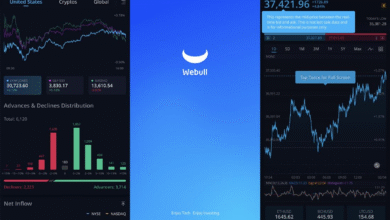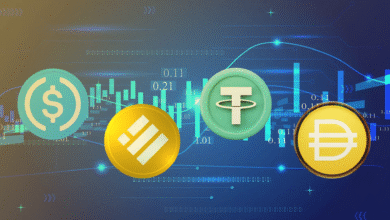XRP: Potential Alternative to Traditional Monetary Systems

XRP is rapidly gaining attention as a significant player in the evolving landscape of digital assets, particularly in discussions about the future of monetary systems. A recent report from the Central Bank of Malaysia highlights XRP alongside Bitcoin, suggesting these cryptocurrencies could serve as alternatives to traditional payment methods. The paper emphasizes the potential of XRP to influence the adoption of central bank digital currencies (CBDCs), which may reshape our financial infrastructure. However, while XRP is being recognized for its innovative potential, there are challenges concerning its stability and integration into the current banking framework. As the dialogue surrounding cryptocurrency continues to grow, XRP stands at the forefront of discussions on the future of finance, captivating both advocates and skeptics alike.
In recent times, the emergence of digital currencies has sparked significant interest among economists and financial analysts. Specifically, XRP, a form of digital money designed for transfer efficiency, is increasingly seen as a viable option when compared to other alternatives like Bitcoin. As central banks explore the implementation of digital forms of currency, discussions around modern monetary systems are becoming more crucial. This exploration of virtual currencies reflects a broader shift towards innovative payment solutions and decentralized finance. Thus, XRP’s role in this transformative phase may be pivotal in determining the future landscape of financial transactions.
The Potential of XRP and Bitcoin in Modern Monetary Systems
The recent working paper from the Central Bank of Malaysia brings XRP and Bitcoin to the forefront of discussions surrounding modern monetary systems. As the landscape of digital assets evolves, both cryptocurrencies are being considered as viable substitutes for traditional currencies and banking methods. The paper highlights the concept of ‘modern money,’ suggesting that, if embraced widely, these digital currencies might significantly influence the way payment systems operate globally. The shift towards cryptocurrencies like XRP not only challenges conventional financial practices but also introduces innovative approaches to how we perceive value and transactions.
Despite their potential, the paper outlines significant concerns regarding XRP and Bitcoin’s ability to stabilize within the financial ecosystem. The absence of a ‘stable nominal anchor’ raises flags about their reliability in everyday transactions, posing challenges in their acceptance as mainstream payment methods. This skepticism illustrates the counterpoint in the conversation about integrating cryptocurrencies into the central bank digital currency space, as financial authorities seek reliable, stable options for modern monetary frameworks.
Challenges Facing Cryptocurrency Adoption in Payment Systems
Cryptocurrencies like XRP and Bitcoin face a myriad of challenges that could hinder their adoption in payment systems. One major issue identified by the Central Bank of Malaysia is the fragmentation propensity of cryptocurrencies, which complicates their functionality as unified payment solutions. With various digital assets operating on decentralized platforms, achieving interoperability between them and traditional financial systems remains a daunting task. This fragmentation not only affects user confidence but also requires substantial liquidity, making it difficult for businesses and consumers to rely on them for everyday transactions.
Moreover, the decentralized nature of cryptocurrencies limits capacity for regulation and oversight, which are essential for creating a stable payment environment. Without a centralized authority to manage liquidity and enhance trust among users, concerns about fraud and volatility loom large. As the landscape for central bank digital currencies (CBDCs) develops, regulatory bodies worldwide are grappling with how to harness the innovation of cryptocurrencies while ensuring security and stability in monetary transactions.
XRP’s Legitimacy in the Eyes of Central Banks
The acknowledgment of XRP alongside Bitcoin by the Central Bank of Malaysia serves as a significant milestone for the cryptocurrency community, especially for those advocating for XRP’s potential utility in global finance. Increased visibility from established financial authorities may enhance XRP’s legitimacy, paving the way for its broader acceptance. Proponents of XRP argue that this recognition reflects the evolving narrative of digital assets within the field of monetary systems, positioning XRP as a potential player in the future landscape of central bank digital currencies.
However, the positive perspective on XRP is not universally accepted; critics remain skeptical about its implications for the larger financial architecture. Detractors often point to the influence of global financial institutions, such as the IMF and the World Bank, suggesting that the central bank’s position may not stem from an unbiased assessment of XRP’s potential. This discourse highlights the contentious nature of cryptocurrency regulation and its implications for the broader adoption of digital assets within traditional economic structures.
The Role of Central Bank Digital Currencies (CBDCs)
Central Bank Digital Currencies (CBDCs) are emerging as a pivotal concept in the future of monetary systems, as recognized in the Central Bank of Malaysia’s working paper. The idea is that CBDCs could provide the stability and trust that private cryptocurrencies like XRP and Bitcoin currently lack. With CBDCs, central authorities aim to offer a digitized version of national currencies, combining the efficiency of digital transactions with the regulatory framework of traditional banking systems. As these digital currencies gather momentum, they could catalyze a paradigm shift in how individuals engage with financial transactions.
The development of CBDCs raises important questions about the future relationship between cryptocurrencies and traditional banking. While some view CBDCs as a threat to private cryptocurrencies, others argue that they could coexist, each serving distinct roles in the monetary landscape. The dynamics between CBDCs and cryptocurrencies like XRP and Bitcoin will likely influence how consumers adopt and utilize digital assets, impacting everything from daily transactions to international trade.
The Fragmentation of Cryptocurrency and Its Impacts
One of the critical concerns raised in discussions about the future of both XRP and Bitcoin is the inherent fragmentation within the cryptocurrency market. This fragmentation poses significant hurdles in establishing a unified approach to currency exchange and payment processing. Each cryptocurrency operates independently, leading to complexities when integrating these various digital assets into a coherent payment system. The paper from the Central Bank of Malaysia highlights these issues, noting that without consolidation, the potential of cryptocurrencies may be severely limited.
Moreover, the operational inefficiency stemming from this fragmentation can deter potential users who prioritize seamless transaction experiences. For XRP and Bitcoin to gain wider acceptance and usage, there must be strides made towards interoperability and standardized frameworks that can accommodate diverse cryptocurrencies. Only then can these digital assets hope to rival traditional currency systems and fulfill their envisioned roles within modern economic ecosystems.
Influence of Global Financial Institutions on Cryptocurrencies
The discourse surrounding XRP and Bitcoin is further complicated by the influence of global financial institutions like the IMF and the World Bank. Critics of the Central Bank of Malaysia’s working paper underscore the possibility that external pressures and considerations may shape the central bank’s perspectives on private cryptocurrencies. This concern raises questions about impartiality and poses challenges for those advocating for the legitimate integration of XRP and Bitcoin into mainstream finance without undue interference from global financial entities.
The interactions between central banks and global financial institutions have a profound effect on how cryptocurrencies are perceived and regulated. As policies evolve, the potential endorsement or criticism from influential bodies can significantly sway public perception and impact cryptocurrency markets. Understanding these dynamics is crucial for investors and stakeholders who navigate the complex tapestry of cryptocurrency adoption and its alignment with traditional monetary systems.
The Financial Technology (Fintech) Landscape and XRP
The financial technology landscape has been rapidly evolving, with cryptocurrencies like XRP at the forefront of this transformation. As fintech continues to disrupt traditional banking models, companies are leveraging the unique capabilities of digital assets to create innovative payment solutions. XRP, known for its speed and low transaction costs, positions itself as a strong contender for enhancing cross-border payments, attracting the attention of businesses looking to streamline operations and enhance customer satisfaction.
However, while the potential is immense, integration of XRP within the broader fintech ecosystem faces formidable challenges. The need for regulatory clarity and stable infrastructures becomes paramount as fintech companies seek to implement cryptocurrency solutions. Investors and entrepreneurs must navigate complex regulatory landscapes to harness the full potential of XRP and other digital assets without running afoul of legal obstacles, making collaboration between traditional sectors and emerging technologies crucial.
The Future of Digital Assets in Monetary Policy
The evolution of digital assets, including cryptocurrencies, presents intriguing implications for monetary policy and financial stability. As central banks assess their roles in adopting these technologies, considerations around CPI inflation control, economic growth, and the velocity of money enter the conversation. The Central Bank of Malaysia’s discussions around XRP and Bitcoin represent a larger call to rethink how these digital assets can align with economic objectives, potentially reshaping policy approaches in a digital age.
Incorporating digital assets into foundational monetary frameworks could facilitate the implementation of new measures to boost economic efficiency and inclusivity. However, a careful assessment is necessary to mitigate potential risks tied to volatility, privacy concerns, and broader societal implications. The path forward will depend on finding a balance that embraces technological innovation while maintaining stability within the financial system.
Public Perception and Its Role in Cryptocurrency Adoption
Public perception plays a crucial role in shaping the future of cryptocurrencies like XRP and Bitcoin. As seen in the reactions to the Central Bank of Malaysia’s working paper, the dialogue surrounding digital assets is not merely technical; it is deeply intertwined with societal trust and acceptance. For cryptocurrencies to flourish, there must be a shift in the general public’s understanding and comfort level with digital currencies, which can be influenced by educational initiatives and transparent discussions.
Media narratives and social media discussions contribute significantly to the perception of cryptocurrencies, impacting their adoption rates. As more individuals become educated about the functioning and potential benefits of XRP and Bitcoin, we may witness an upsurge in user engagement and proactive investment in digital assets. It is vital for advocates of cryptocurrency to foster open lines of communication, demonstrating the value propositions of cryptocurrencies while addressing valid concerns and criticisms from skeptics.
Frequently Asked Questions
What is XRP and how does it relate to traditional monetary systems?
XRP is a digital asset designed for fast and cost-effective cross-border payments. It is recognized as a potential alternative to traditional monetary systems, much like Bitcoin, as highlighted by the Central Bank of Malaysia, which sees these cryptocurrencies possibly replacing cash in circulation and bank deposits through widespread adoption.
How does the Central Bank of Malaysia view XRP compared to Bitcoin?
The Central Bank of Malaysia has identified both XRP and Bitcoin as potential alternatives to traditional payment systems. While both cryptocurrencies have the potential to disrupt existing financial paradigms, the CBM cautions that their lack of stability and tendency towards fragmentation could limit their effectiveness as viable payment solutions.
Can XRP be a substitute for central bank digital currencies (CBDCs)?
XRP could potentially function as a substitute for central bank digital currencies (CBDCs) in a decentralized payment system. The CBM paper suggests that private tokens like XRP may serve as means of payment outside the banking system, paralleling the proposed digital assets in CBDC frameworks.
What are the challenges faced by XRP as a digital asset?
XRP faces significant challenges, including its lack of a stable nominal anchor and susceptibility to market fragmentation. The Central Bank of Malaysia points out these drawbacks as potential obstacles that could prevent XRP from effectively complementing or replacing current monetary systems.
How does decentralization affect XRP’s utility as a cryptocurrency?
Decentralization presents both benefits and challenges for XRP’s utility. While it enhances security and independence from central authorities, it also requires substantial liquid balances across crypto platforms to facilitate effective payments, as highlighted in the Central Bank of Malaysia’s analysis.
What does the recent CBM paper imply about the legitimacy of XRP?
The acknowledgment of XRP by the Central Bank of Malaysia adds to its legitimacy in the eyes of supporters who argue that official recognition by a governmental body suggests a growing acceptance of XRP in the financial landscape, despite critiques regarding potential external influences from organizations like the World Bank or IMF.
How does XRP compare to Bitcoin in terms of adoption as a digital asset?
While both XRP and Bitcoin are viewed as digital assets capable of reshaping monetary systems, Bitcoin is often seen as a store of value with wider recognition. XRP, on the other hand, is designed specifically for transaction efficiency, which could make it more suitable for adoption in day-to-day payments, according to discussions stemming from the CBM’s working paper.
What future prospects does the CBM paper outline for XRP and similar cryptocurrencies?
The CBM paper expresses skepticism towards the future prospects of XRP and similar cryptocurrencies due to their inherent drawbacks. However, it acknowledges the potential for these digital assets to disrupt traditional financial systems if they achieve widespread adoption and address challenges related to stability and integration into existing monetary frameworks.
| Key Points | Details |
|---|---|
| Introduction of XRP | The Central Bank of Malaysia identifies XRP and Bitcoin as potential alternatives to traditional monetary and payment systems. |
| Concept of Modern Money | The paper explores fundamental concepts of modern money and its implications for a central bank digital currency (CBDC). |
| Potential to Replace Traditional Currency | The authors suggest that these digital assets could replace currency in circulation or bank deposits if widely adopted. |
| Caution About Future Prospects | The paper warns of a lack of stable nominal anchor and tendency toward fragmentation as significant drawbacks for XRP and Bitcoin. |
| Challenges with Crypto Platforms | Large liquid balances are needed to facilitate payments across various cryptocurrencies due to decentralization limitations. |
| Social Media Reaction | Debate sparked over XRP’s legitimacy, with some supporting Central Bank’s acknowledgment while others criticize potential IMF/World Bank influence. |
Summary
XRP is increasingly being recognized as a potential player in the evolving landscape of digital currencies, according to a recent working paper from the Central Bank of Malaysia. While the document presents some skepticism regarding the stability and practicality of cryptocurrencies like XRP, it also highlights the growing discussion around their role in modern financial systems. As the world shifts towards digital currencies, the insights from the CBM may play a crucial role in shaping the future of payment systems, making XRP a topic worth following closely.




